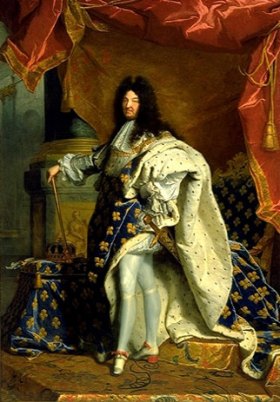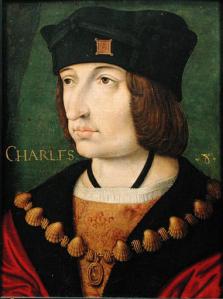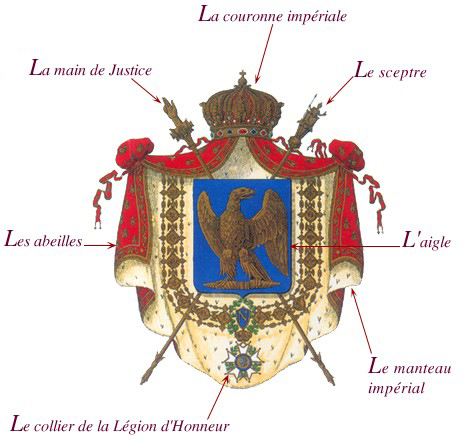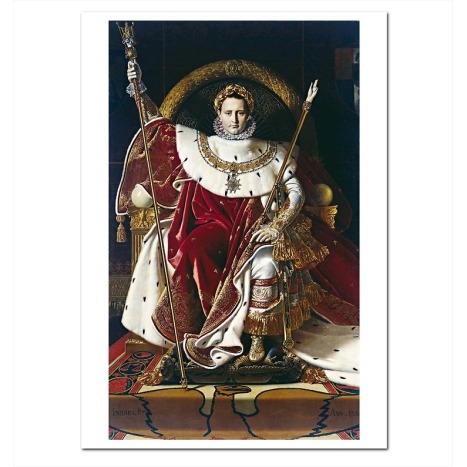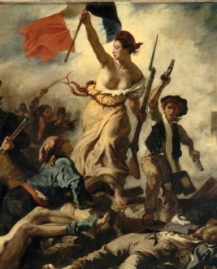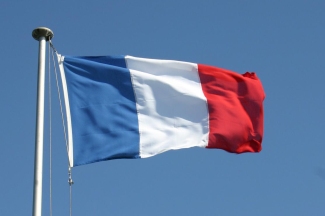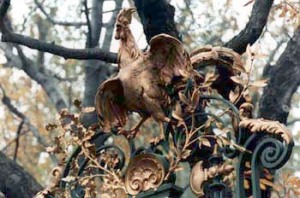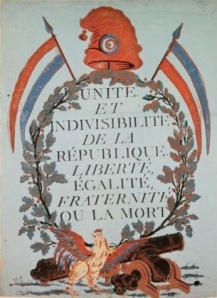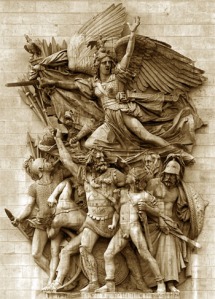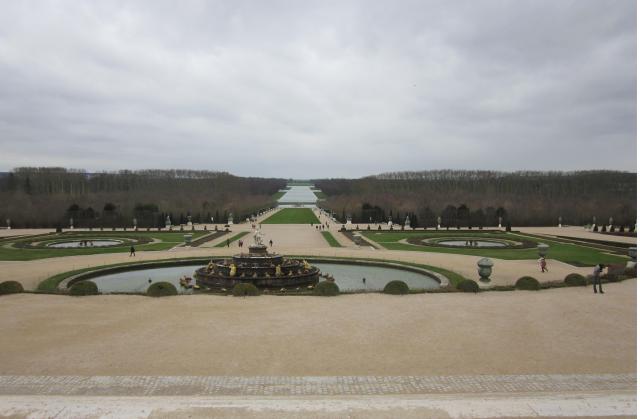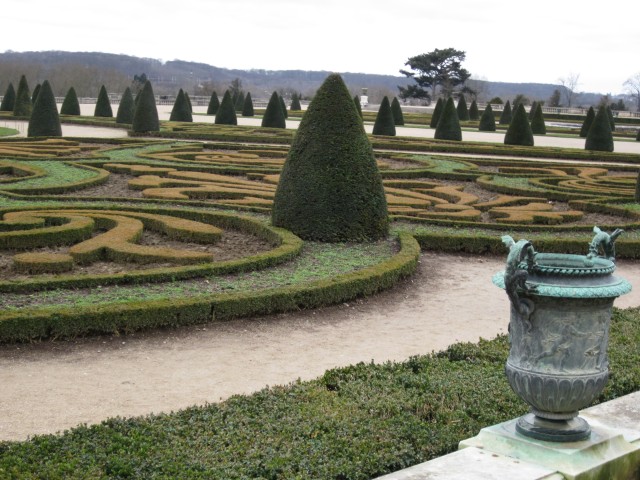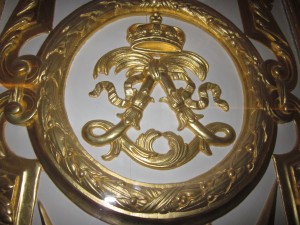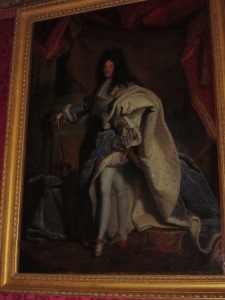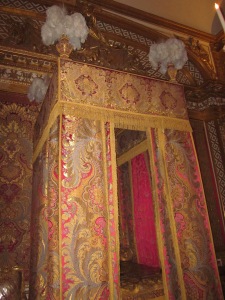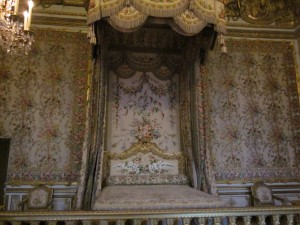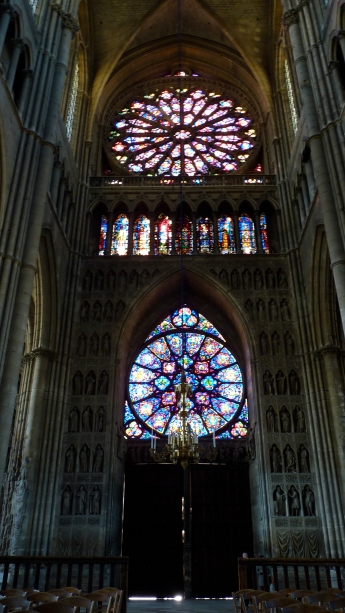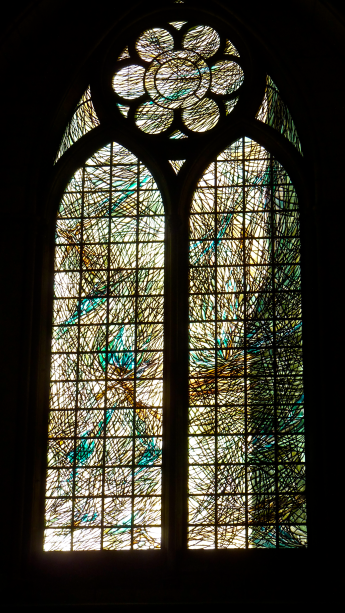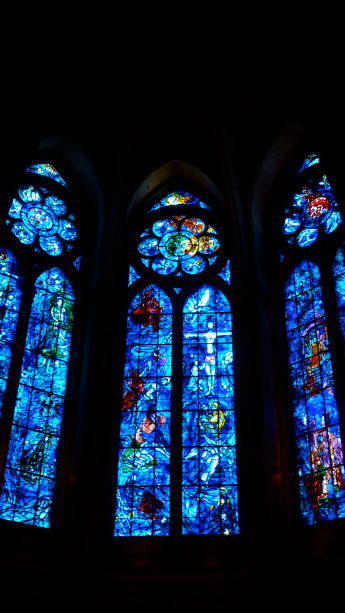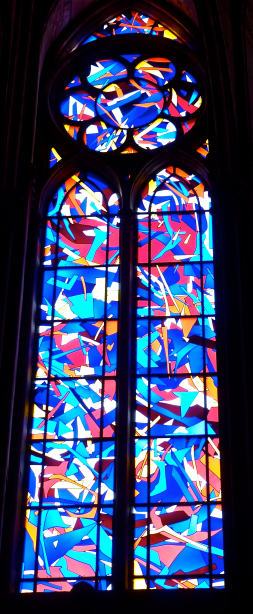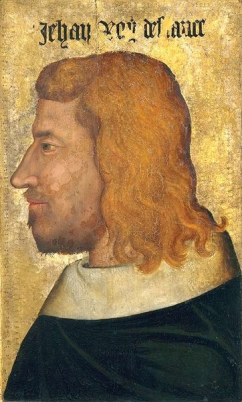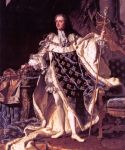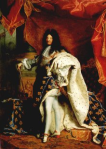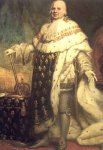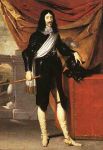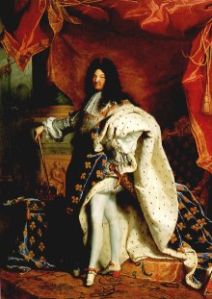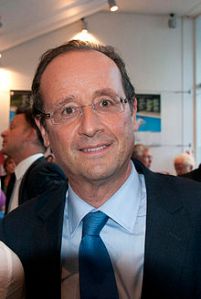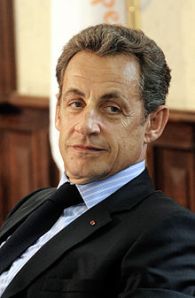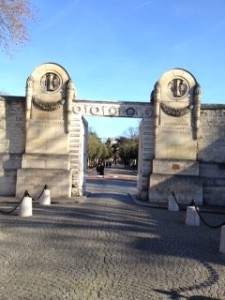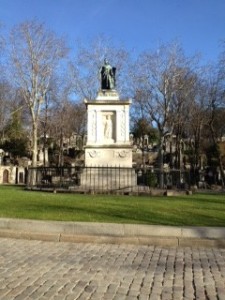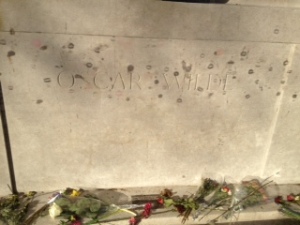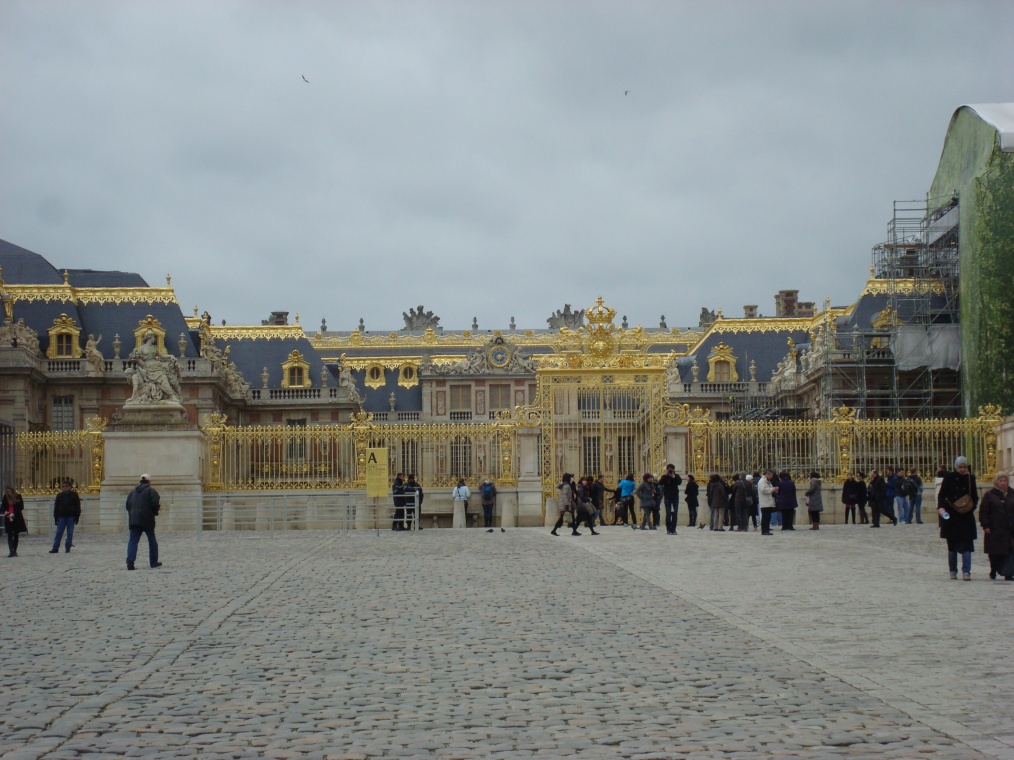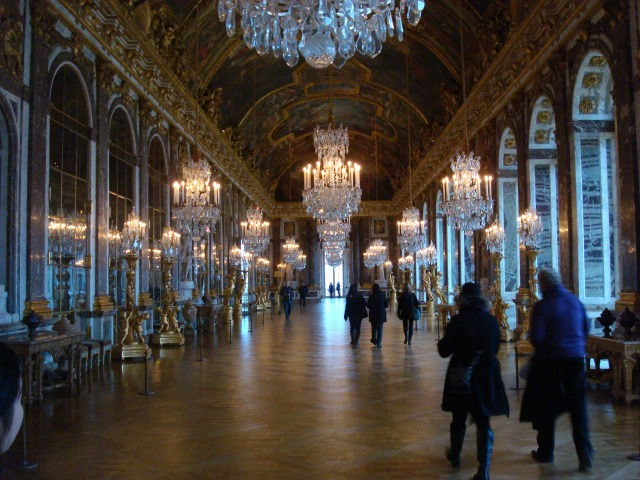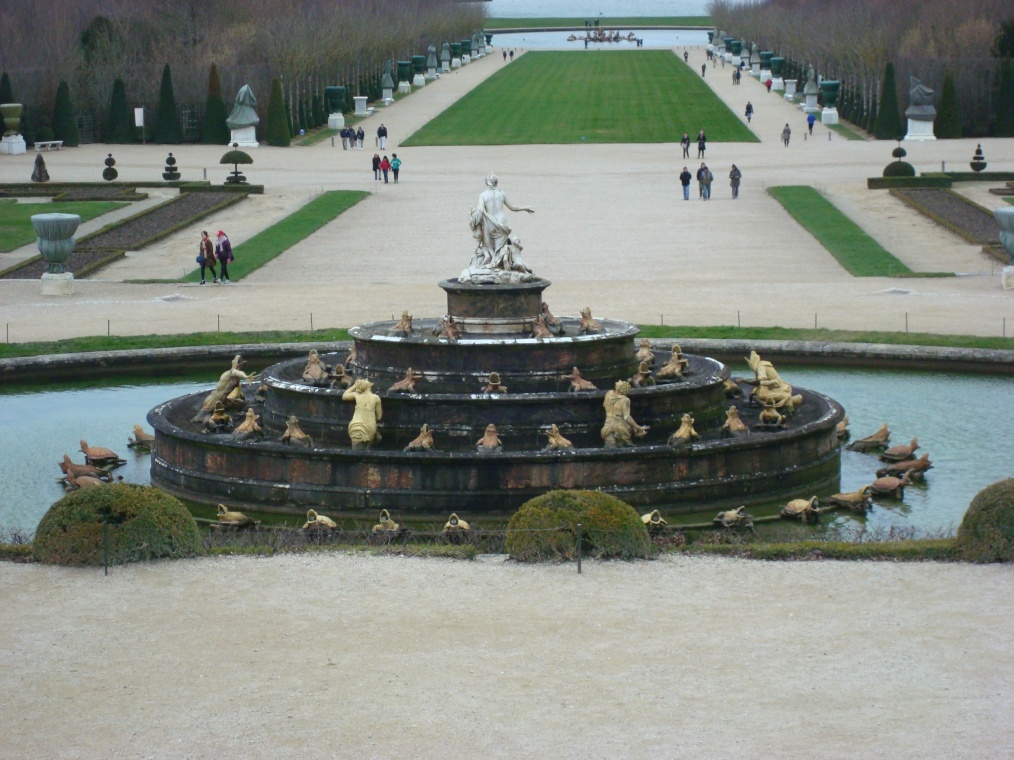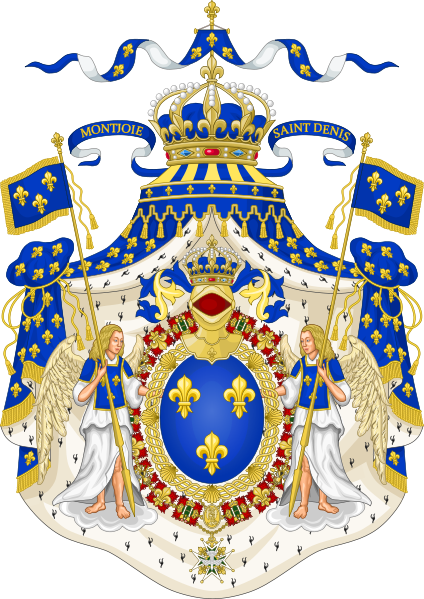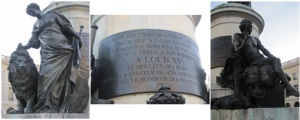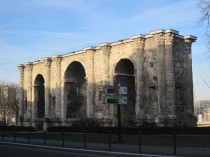Dans chacun des régimes politiques que la France a connus, soit le royaume, l’empire, ou la République, il y avait toujours une iconographie associée avec le pouvoir gouvernemental. Ces symboles ont été souvent représentés dans les portraits officiels du chef d’état, et ils ont aussi été utilisés dans les décorations et l’architecture des hôtels et monuments gouvernementaux.
Les Regalia des Rois de France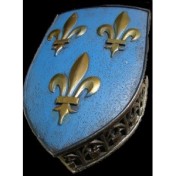
- Fleur de lys : en réalité la représentation d’une fleur d’iris, la fleur de lys est devenue le symbole des rois de France à partir d’environ le règne de Louis VII. Le nom est attribué a lui aussi, parce que c’est la fleur de iris -> Fleur de Roi Louis -> Fleur de Loys -> Fleur de Lys.
- Epée : L’épée d’or symbolise la défense du pays et de la religion. Celle de Louis XIV s’appelait « Joyeuse ».
- Trône
- Manteau d’hermine et de bleu royale : Le manteau du roi était faite de tissu bleu, la couleur royale, et de la peau de plusieurs hermines. Chaque hermine était blanche avec un point noir. Les plusieurs points noirs dans le manteau indiquent le grand nombre de hermines nécessaires pour faire le manteau, ce qui nous montre la richesse du vêtement.
- Main de Justice : Cette main, sur un bâton de bois, est une représentation de que la loi c’est le roi. Il peut déclarer la guerre et la paix. Selon la tradition, le pouce, l’index, et le doigt majeur sont déployés, en symbolisant le roi, la raison, et la charité, respectivement.
- Sceptre : Le sceptre est un symbole du pouvoir et de l’autorité du roi.
- Couronne : La couronne, qu’était toujours fermée après François 1ère, représente la puissance de celui qui la porte.
- Ordre de Saint Michel: L’Ordre de Saint Michel était un ordre chevalier créé par le roi Louis XI en 1469 pour reconnaître la valeur et la loyauté des ses vassaux. Le symbole de l’ordre était un collier avec le coquille Saint Jacques.
L’iconographie de l’Empire
- Ordre de la Légion d’Honneur : La Légion d’Honneur, dont le nom rappelle les légions Romaines, était un ordre créé par Napoléon pour reconnaître les services militaires.
- Abeille : En 1653, des abeilles d’or avaient été découvertes dans la tombe de Childéric Ier, le fondateur de la dynastie des rois Mérovingiens. Donc, en substituant le symbole royal de la fleur de lys avec le symbole impérial des abeilles, Napoléon avait voulu faire un lien entre son empire et les origines du royaume de la France. Les abeilles symbolisent aussi l’immortalité et la résurrection.
- Aigle : L’aigle était l’oiseau emblématique de Jupiter, le roi des dieux Romans. Il était aussi utilisé comme symbole de l’ Empire Romain et de ses victoires militaires. En adoptant l’aigle comme une symbole central du Empire Français, Napoléon voulait affirmer sa puissance et celle de son empire, en s’installant comme les « héritiers » des Romains.
- Manteau d’hermine et de pourpre impérial : Selon les récits historiques, il fallait 8,000 mollusques pour faire 1g de pigment pourpre. Donc, les vêtements pourpres, comme l’hermine, indiquent le pouvoir et la richesse.
- Couronne de laurier : Comme avait été déjà mentionné, Napoléon avait toujours voulu associer son empire avec la gloire de l’Empire Romain. Donc, sa couronne de laurier évoque celles données aux généraux romains victorieux.
- Sceptre
- Main de Justice
Les symboles de la République Française
- Marianne : Marianne est la représentation allégorique de la liberté et de la République.
- Le drapeau bleu-blanc-rouge : Dans le drapeau, le blanc, qui était la couleur de la monarchie, est entourée par le bleu et le rouge, les couleurs de la ville de Paris. La juxtaposition des trois couleurs représente « l’alliance auguste et éternelle entre le monarque et le peuple ».
- Le coq : Comme symbole, le coq fait deux liens avec les Gaulois qui étaient les plus anciens habitants de la région qui aujourd’hui est la France. Les Gaulois avaient eux-mêmes utilisé le coq comme symbole, et le coq apparaît dans plusieurs monnaies gauloises. En plus, le coq représentes un jeux de mots, parce que en Latin le mot “gallus” signifiant à la fois les peuples Gaulois, et le coq.
- Liberté, Égalité, Fraternité : Les trois mots qui comprennent la devise de la République Française résument les idéaux centraux pour lesquels les Français se sont battus avec la monarchie française, et autour desquels la République Française avait été fondée. Ces idéaux ont surgi pendent le Siècle des Lumières (XVIIème siècle).
- La Marseillaise : Désignée comme hymne national de la France en 1887 par la IIIème République, la Marseillaise avait été originalement un chant de guerre révolutionnaire et un hymne à la liberté. Voici en bas la représentation de Marianne qui se trouve sur la face de l’Arc de Triomphe de Napoléon. Le nom de cette sculpture est Le départ de volontiers de 1792, mais elle est souvent appelée La Marseillaise.

